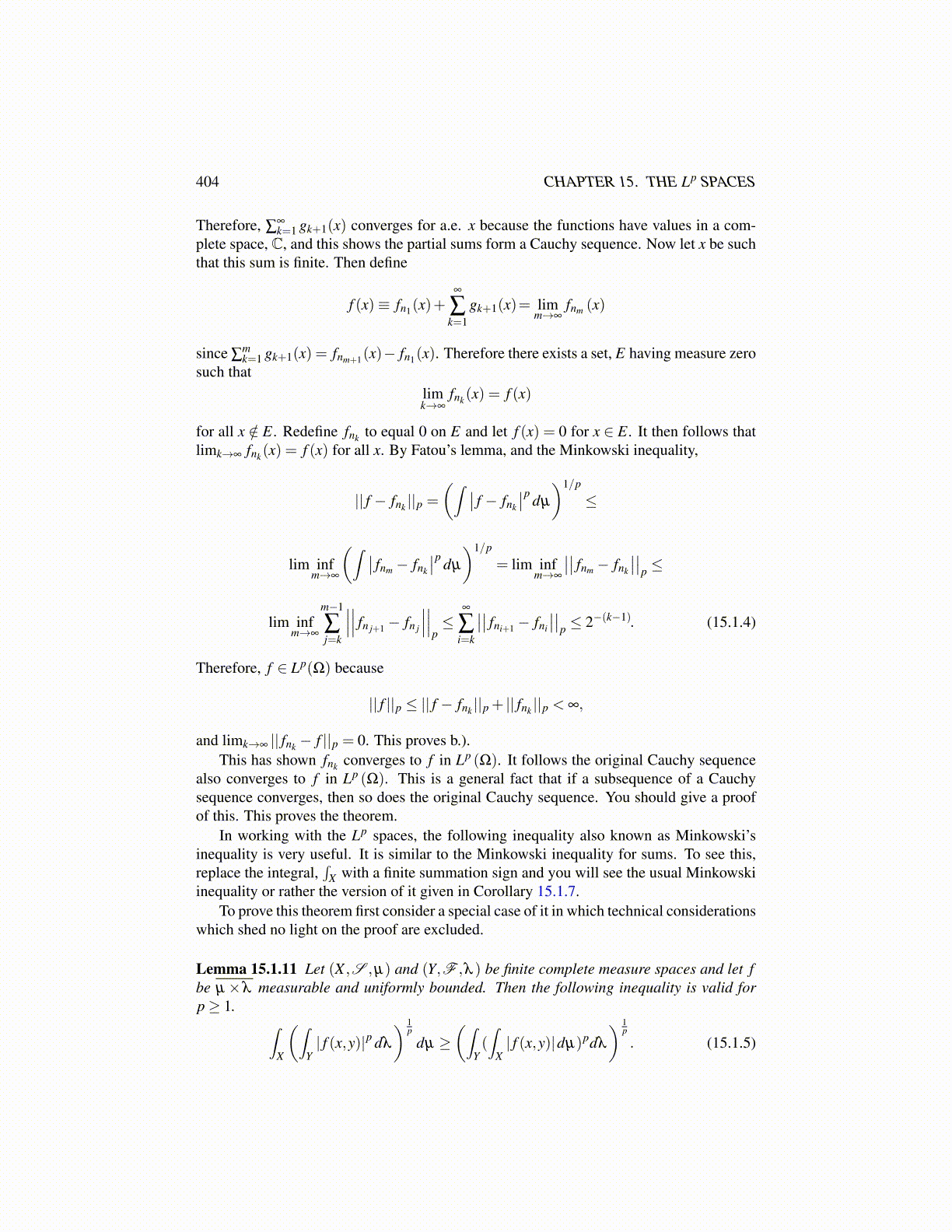
404 CHAPTER 15. THE Lp SPACES
Therefore, ∑∞k=1 gk+1(x) converges for a.e. x because the functions have values in a com-
plete space, C, and this shows the partial sums form a Cauchy sequence. Now let x be suchthat this sum is finite. Then define
f (x)≡ fn1(x)+∞
∑k=1
gk+1(x)= limm→∞
fnm (x)
since ∑mk=1 gk+1(x) = fnm+1(x)− fn1(x). Therefore there exists a set, E having measure zero
such thatlimk→∞
fnk(x) = f (x)
for all x /∈ E. Redefine fnk to equal 0 on E and let f (x) = 0 for x ∈ E. It then follows thatlimk→∞ fnk(x) = f (x) for all x. By Fatou’s lemma, and the Minkowski inequality,
|| f − fnk ||p =(∫ ∣∣ f − fnk
∣∣p dµ
)1/p
≤
lim infm→∞
(∫ ∣∣ fnm − fnk
∣∣p dµ
)1/p
= lim infm→∞
∣∣∣∣ fnm − fnk
∣∣∣∣p ≤
lim infm→∞
m−1
∑j=k
∣∣∣∣∣∣ fn j+1 − fn j
∣∣∣∣∣∣p≤
∞
∑i=k
∣∣∣∣ fni+1 − fni
∣∣∣∣p ≤ 2−(k−1). (15.1.4)
Therefore, f ∈ Lp(Ω) because
|| f ||p ≤ || f − fnk ||p + || fnk ||p < ∞,
and limk→∞ || fnk − f ||p = 0. This proves b.).This has shown fnk converges to f in Lp (Ω). It follows the original Cauchy sequence
also converges to f in Lp (Ω). This is a general fact that if a subsequence of a Cauchysequence converges, then so does the original Cauchy sequence. You should give a proofof this. This proves the theorem.
In working with the Lp spaces, the following inequality also known as Minkowski’sinequality is very useful. It is similar to the Minkowski inequality for sums. To see this,replace the integral,
∫X with a finite summation sign and you will see the usual Minkowski
inequality or rather the version of it given in Corollary 15.1.7.To prove this theorem first consider a special case of it in which technical considerations
which shed no light on the proof are excluded.
Lemma 15.1.11 Let (X ,S ,µ) and (Y,F ,λ ) be finite complete measure spaces and let fbe µ×λ measurable and uniformly bounded. Then the following inequality is valid forp≥ 1. ∫
X
(∫Y| f (x,y)|p dλ
) 1p
dµ ≥(∫
Y(∫
X| f (x,y)|dµ)pdλ
) 1p
. (15.1.5)